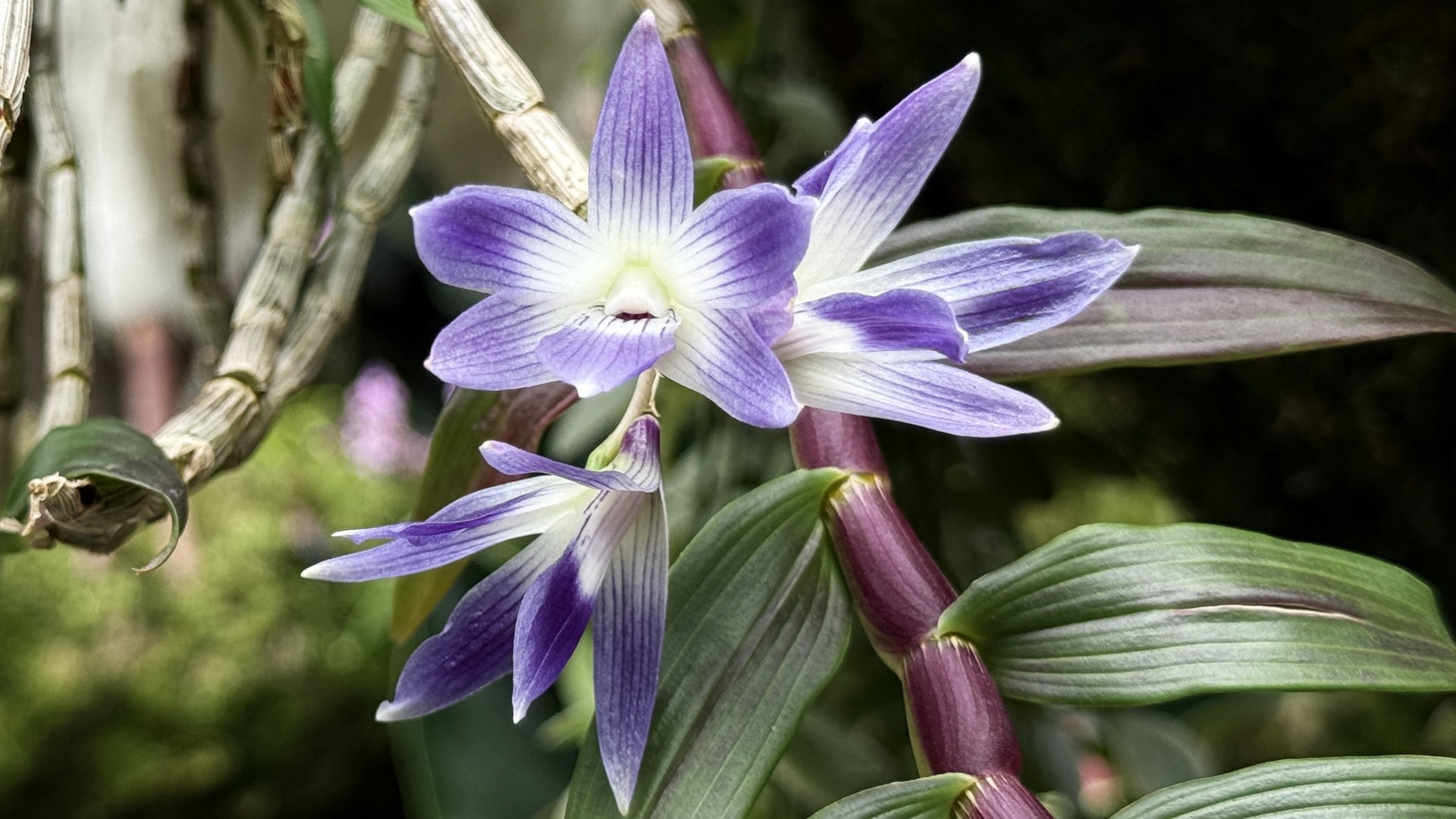Chrysanthemum 'Fireworks'
 A cluster of Chrysanthemum 'Fireworks' flowers. Aren't they beautiful?
A cluster of Chrysanthemum 'Fireworks' flowers. Aren't they beautiful?
Chrysanthemums are fascinating flowering plants native to Algeria and the Canary Islands, as well as East Asia, particularly China. With a diverse range of bloom types and characteristics, cultivated chrysanthemums have a rich history dating back over 2000 years to ancient China! I’m sure many of us are familiar with chrysanthemums – they play a very significant role in both celebratory and solemn aspects in Singapore! Coming in different forms and colours, in this post we are featuring Chrysanthemum ‘Fireworks’, a spider mum.
 A closeup of the spider mum.
A closeup of the spider mum.
Spider mums are one of chrysanthemum's many floral forms. They feature long, thin, tubular petals resembling spider legs, radiating outwards from the flower’s center. The distinctive spider-like appearance of these mums resulted from centuries of selective breeding and hybridization. As chrysanthemums spread from China, one of its centres of diversity, to other parts of the world, including Japan in the 8th century and later to Europe in the 17th century, various cultivars were bred. Chrysanthemum ‘Fireworks’ is one of the particularly stunning cultivars we are exhibiting this year, featuring elegant double-petaled flowers with delicate, inward-curling ray florets. Bearing huge flower heads in white or gold on a perfect backdrop of dark green, pinnately lobed leaves, their flower heads can reach up to 20cm in diameter!
There are 41 species of Chrysanthemum, all members of the daisy family (Asteraceae). They can be either annuals or perennials and are herbaceous or sub-shrub plants with deeply lobed leaves, growing up to 1.5m in height. Chrysanthemums are composite flowers, meaning each flower head is a community of smaller blooms, consisting of ray florets that resemble petals surrounding a center of disc florets. The name "chrysanthemum" comes from Greek words, chrysos meaning ‘gold’, and anthemon meaning ‘flower’ in reference to the vibrant golden flower heads of many of the species in the genus, including the type species, the Indian chrysanthemum (Chrysanthemum indicum). Besides their aesthetic appeal, chrysanthemums carry many significant meanings in the Chinese culture. They are known for symbolising longevity, happiness, and good fortune, which are frequently used during the Lunar New Year celebrations. Come check out this spider mum in Flower Dome, featured as part of our Lunar New Year display: Spring Blossoms: Legend of Lady White Snake!
Written by: Ng Yu Qin, Senior Horticulturist, Research and Horticulture
Yu Qin is always looking for ways to pick up new skills and put them to use. She spends most of her time with orchids and enjoys learning something new about them every day!



